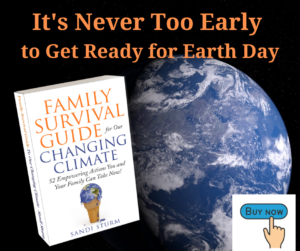Photo Credit: “Combat Fishing in Alaska”, Sandi Sturm
As the idea for my new book mills around in my head, I gather stories about National Parks and how things are changing. I follow a few newsletters and go straight to the source (NPS.gov) to find out more information. But the news is not good.
Wallace Stegner, a Western Historian, and nature writer, is believed to have coined the term, “National Parks: America’s Best Idea.” I must agree with him. President Franklin D. Roosevelt explains the fundamental idea behind National Parks is that “the county belongs to the people, that it is in process of making for the enrichment of the lives of all of us.” And J. Horace McFarland, president of the American Civic Association (1916) stated that “National Parks are an American idea; it is one thing we have that has not been imported.”
If you know me, you know I have a not-so-secret love affair with the Parks. We have traveled and stayed at 40 (I think), some multiple times. The few that are left on the list are difficult to get to. But I will.
Note: I am referring to the 63 National Parks. There are 423 units in the system, such as national seashores and monuments.
It saddens me to read headlines about “Threatened and Endangered Parks.” Threats are mostly coming from overcrowding and an ignorance that thinks its acceptable to tag graffiti on top of ancient artifacts.
In a recent newsletter by the National Parks Traveler, they report on a few key parks that I want to share with you here.
Glacier Bay National Park, Alaska – Whales are impacted by the warming Pacific waters. You know about glacial retreat, but do you know how that impacts the ecological web that nourishes humpback whales? There has been a decline in the number of calves born in recent years, and when heatwaves hit Alaska, like in the summers of 2014 – 2016, Park personnel said, “you could see their (whale’s) shoulder blades.”
Saguaro National Park, Arizona – Cacti and other flora and fauna are competing with urban development, drought, wildfires, and invasive species – all augmented by climate change.
Fire Island National Seashore, New York – Overuse is one threat as 21 million people live within 60 miles of this 26 mile long park. Since the pandemic hit, people flock to public spaces which become too popular to sustain. Studies suggest that the Island will be inaccessible within 50 years due to sea level rise projected between 20 inches and six feet.
Not in the newsletter, but a story I have been following…
Denali National Park, Alaska – This is near and dear to my heart as we lived up north for 12 years and spent a bit of time exploring the Park. If you are not familiar, there is one road, 92 miles long, that takes you inside the Park on buses. In late August 2021, that mileage reduced to less than half. The road is on top of permafrost, as is most of interior Alaska, which is melting with increased temperatures. On top of that, they received heavy rainfall in the spring that melted permafrost even more. A slump in the road that used to be manageable is no longer passable, or easily fixed. The Park Service determined it is caused by climate change.
The list goes on.
I have noticed a big difference in messaging over the past few years. The phrase Climate Change is showing up in reports as well as public website pages where it was once banned. Not sure if I should celebrate or grieve.
Our Best Idea is under attack and we are the ones who can stop it.









